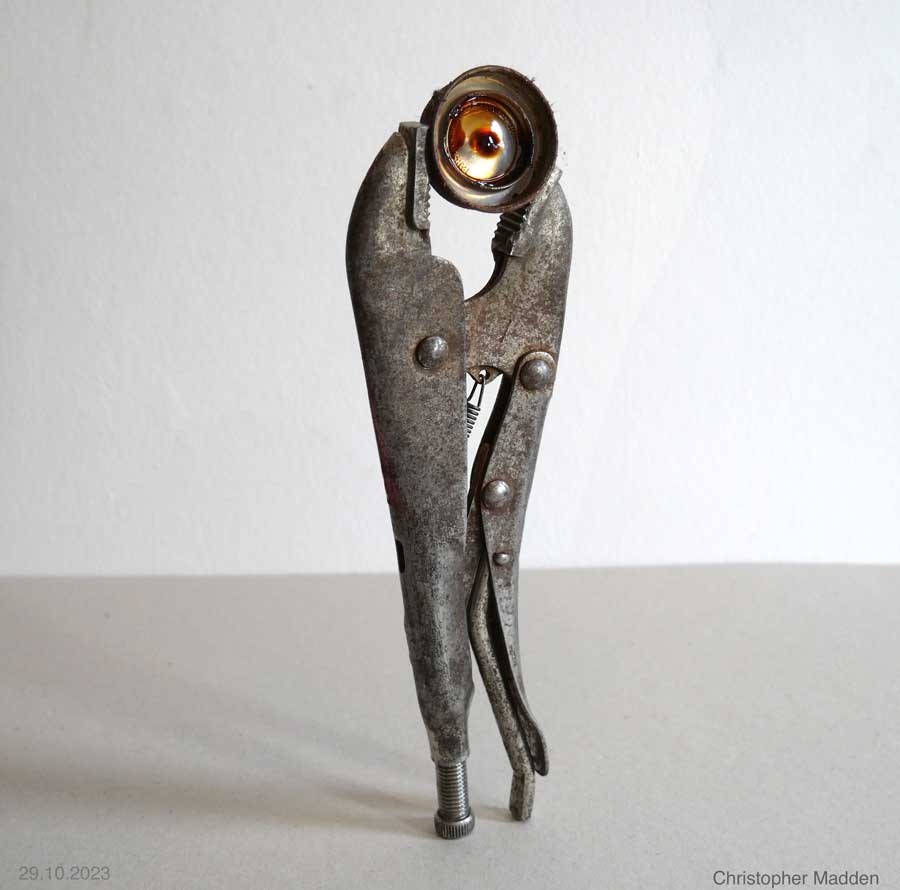
Anthropomorphic sculpture from found objects.
Mole wrench and oil can cap. October 2023.
A mole wrench and an oil can cap create an anthropomorphic sculpture suggesting an embracing couple.
The sculpture came about when I was about to put teak oil on my kitchen worktop, which was something I’d been putting off for the previous five years. The cap of the tin of teak oil was rusted in place due to lack of use and I had to take it off using a mole wrench. Holding the resulting wrench and cap combination instantly I sensed the potential for it to be a work of art in some way, partly because the oil can’s cap resembled an eye when the light struck it. At first I thought that the assemblage perhaps resembled a fish, but after a bit of turning it round in my hands I saw human forms emerge.
This is a good example of the way that people can interpret objects differently to the nature of the objects themselves. I believe that our brains interpret things based on a hierarchy of significance. The brain sees something and then scans down a list of likely possibilities for what the thing is, with highly significant things at the top of the list. At the very top of the list is ‘human being’. Very much lower down the list, if it’s on the list a all, is ‘mole wrench’. When you see a mole wrench in a tool box you automatically go straight to the ‘mole wrench’ item way down your brain’s list, because the context in which you see the wrench is strongly suggestive that it is indeed a mole wrench that you’re looking at. However, in the context-free setting of the photo above your brain has to work harder and has to consult its built-in list of possibilities, at the top of which is ‘human being’. The wrench possesses something of the shape of a human form, and thus the connection is made. The fact that the wrench is standing in a way that no mole wrench in the real world could do without support helps to amplify the effect.